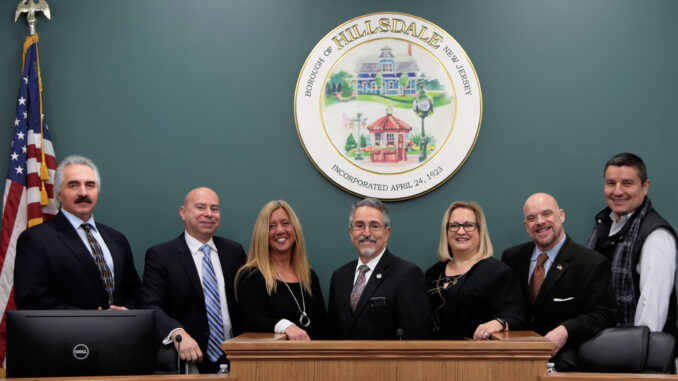
HILLSDALE, N.J.—While the borough waits to hear from any interested redeveloper in the four months since it it passed its redevelopment plan for the 14-acre industrial/commercial zone, one local official would like to see downtown rehabilitation get started.
Frank Pizzella, who chairs the borough’s Economic Growth and Development Committee, said “although like the redevelopment process recently pursued by the borough, rehabilitation is much simpler in scope and focus [and] can can better meet the goals of downtown revitalization while focusing on character and historic preservation.”
Pizzella, one of redevelopment’s biggest advocates, offered options to the council for both redevelopment and downtown revitalization, which he claims can work hand-in-hand with redevelopment to revive the borough.
Pizzella said in a March report, “An investigation is required, and the delineation of a proposed area is also required. In this situation the Hillsdale downtown business district would be the focus.”
He said prior to the adoption of any resolution, the governing body must submit the resolution to the Planning Board for its review. Within 45 days of its receipt, the Planning Board must submit recommendations regarding the proposed resolution, including modifications back to the governing body. The governing body may adopt the resolution thereafter with or without modification.
Pizzella said condemnation is not involved.
“The area designated can be as large or small as desired. When a property owner seeks to rehabilitate their property or business a rehabilitation plan is required. Rehabilitation allows for many of the same benefits that redevelopment makes available, including other more business focused benefits, as well as home improvement benefits for homes that may be included in the designation area,” he said.
Pizzella said “no land purchase or other type of agreement” between any interested parties for redevelopment was ongoing.
“If someone on the governing body knows otherwise, they should immediately inform the entire governing body and our professionals,” he added.
Pizzella observed that no developer has come forward since December’s passage of the redevelopment plan, despite Mayor John Ruocco’s frequent claims that a developer was anxiously awaiting to propose a plan for high-density, multi-family housing should the plan and its “bonus densities” be approved. It was approved, 5–1, on Dec. 8, 2020 with member Zoltán Horváth opposed.
Pizzella said the borough attorney will reach out to Waste Management (WM), one of the redevelopment area’s biggest property owners, to see where it stands on redevelopment. However, while redevelopment moves along slowly, Pizzella noted that downtown revitalization needs to be a short-term priority.
Pizzella said revitalization should move quicker than redevelopment and noted there are at least two options to jump-start downtown rehabilitation efforts.
One would be for the council to declare an area in need of rehabilitation.
He said in his report “The first tool works through the concept of rehabilitation as set forth in [law] a process through which the governing body may determine by resolution that there exists an area that has seen deterioration, underutilization, vacancy, environmental contamination and/or infrastructure, the majority of which is at least 50 years old and in need of repair and/or maintenance, which can be met through a program of rehabilitation to prevent further deterioration and to promote economic development of the area and community overall.”
Another would be to work through a state-funded grant program that helps re-energize suburban downtowns.
“Although like the redevelopment process recently pursued by the borough, Rehabilitation is much simpler in scope and focus. Main Street New Jersey, the second tool, works through Main Street New Jersey [and] is a comprehensive revitalization program that promotes historic and economic development of traditional business districts in New Jersey. The Main Street project was established in 1989 to encourage and support revitalization of downtowns throughout the state,” Pizzella said.
It was not clear if council would take action on a rehabilitation designation soon despite the committee’s recommendation.
Until a development partner comes along to assist in redevelopment, the needed downtown rehabilitation must be the next priority, Pizzella said.
The redevelopment plan rezones 14 acres around Patterson Street industrial zone, imposes design standards, setbacks, and architectural requirements on new types of possible residential, congregate living and mixed-use developments.
It also offers the possibility of density bonuses to developers who propose multi-family projects, with bonuses tied to providing a community benefit such as a community center or open space.
At one point during the heated Dec. 8 meeting to approve a redevelopment plan, Pizzella chastised Ruocco, noting, “Either you don’t get it or you refuse to get it.” Ruocco at one point asked the borough clerk to silence Pizzella so he could respond to his colleague.
Pizzella said recently that the Economic Growth and Development Committee believes “Redevelopment of the industrial area and revitalization of the downtown must work together under a strategy that insures for common goals, that neither program overpowers the other and that both support and benefit the direct goals of the other to secure a final product that is cohesive and complementary.”
